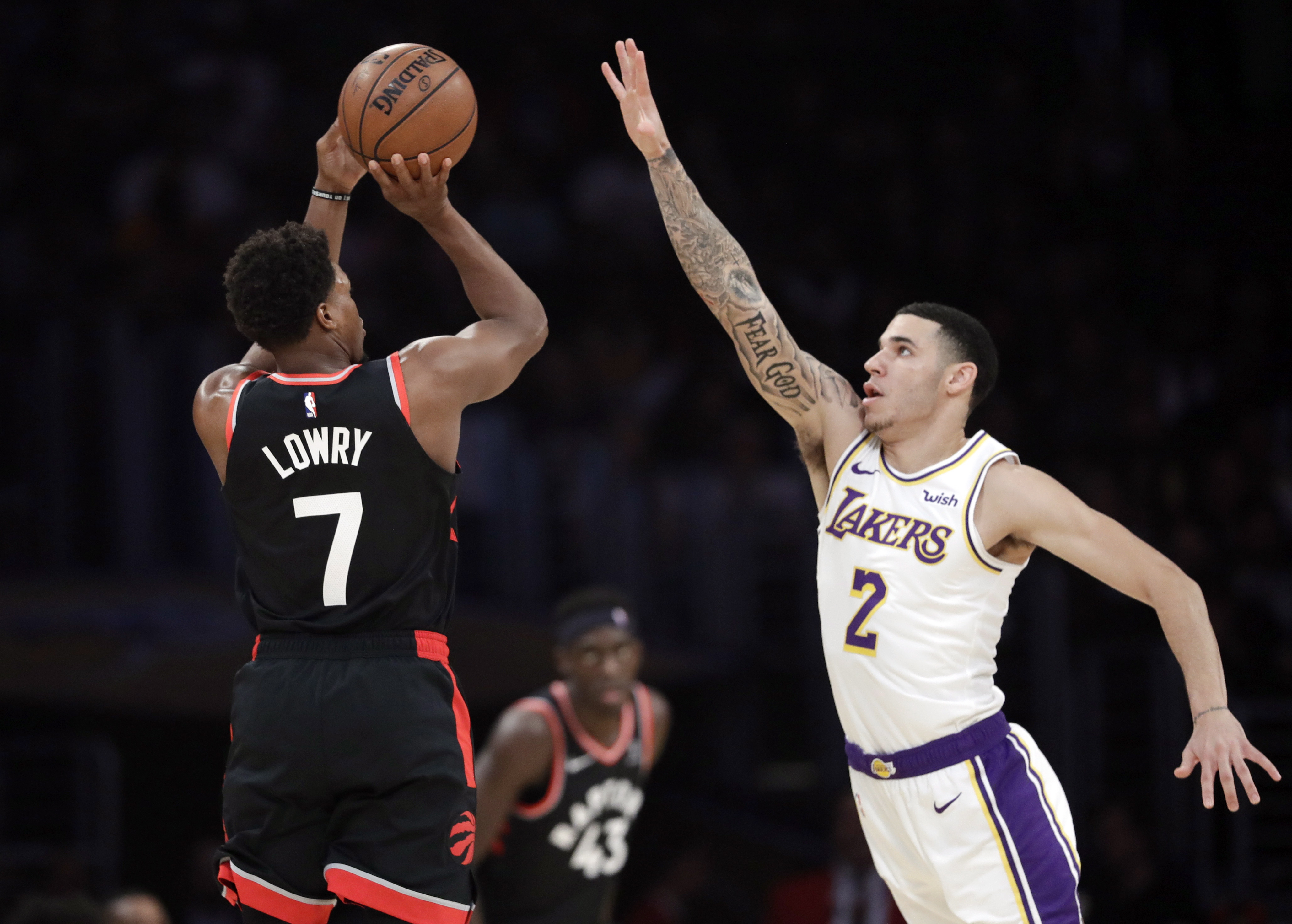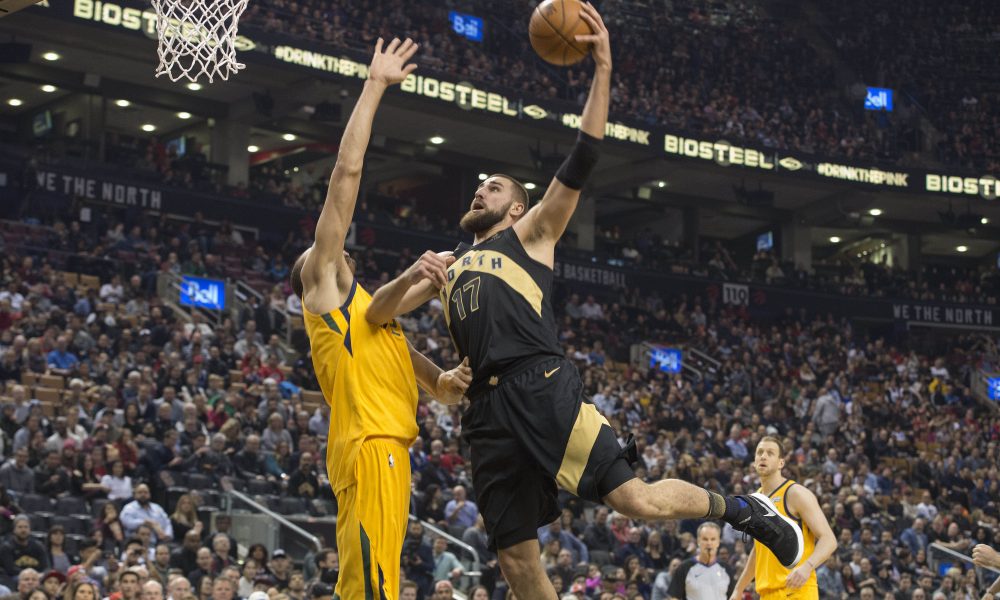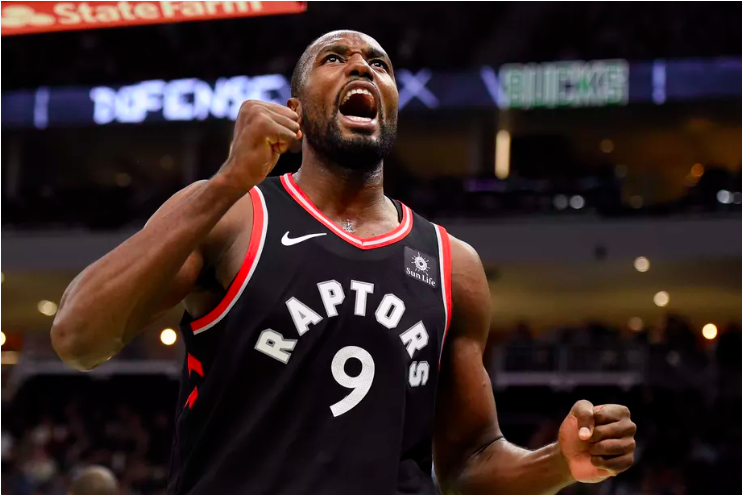A symphony orchestra is only as good as its conductor.
True, each individual music-maker may be independently mellifluous, able to fabricate their own particular sound with unmatched euphony. But bring a group of them together and they become reliant upon a leader, someone to provide direction and reassurance, lest their beautiful tunes clash in garbled discord.
For the Toronto Raptors, that conductor is none other than Kyle Lowry, the man who has been the engine of his team for what feels like eons now. No matter what lineup Lowry is plugged into, he almost always manages to fuel that unit into becoming the best version of itself, working with the various strengths of the players surrounding him, tuning their games to benefit one another and thus creating harmony.
Last season, the Raptors’ offense underwent a critical series of adjustments, incorporating more ball movement and off-ball screens while minimizing isolation possessions in an effort to enhance that harmony. The alterations worked wonders, with Lowry and DeMar DeRozan buying in to help boost the team to sixth in the league in assists (they’d been dead last the year prior) as well as the second-best overall offense.
Now, despite subsuming two new players in Kawhi Leonard and Danny Green (and swapping out DeRozan’s strong team-wide chemistry), the Raptors are ranked second in the league in assists, averaging 26.1 dimes per game.
The improvement, of course, is thanks largely to the constant, and Lowry is conducting Toronto’s offense like he never has before.
Through 11 games, Lowry is averaging a career-high (and league-best) 11.5 assists per contest, and he recently broke Damon Stoudamire’s franchise record of eight-straight games with 10 or more dimes (a streak that’s still active, now at nine-straight). He’s also leading the league in assist points created (284) by a mile, with Draymond Green coming in a distant second (184).
Perhaps the most shocking aspect of Lowry’s early-season returns, however, is that he’s doing all of this with his lowest usage rate (21.1) since his 2012–13 season, the first year he was in Toronto. Contrast that with the fact that his assist percentage is at an insane, career-high 45.6 right now (prior to this season, his high was 34.7 in 2013–14), and one might be left to wonder how exactly he’s creating so many assists while holding onto the ball less than four other Raptors (Leonard, Serge Ibaka, Jonas Valanciunas, and Fred VanVleet all have higher usage rates).
With the two newest additions being good-to-great three-point shooters, Lowry’s taking advantage of the newfound space he has to work with on the floor, breaking down defenses quicker and more effortlessly than he ever has previously. All he needs is one good screen (Ibaka has been noticeably better at setting them this season), and it’s already over—the opponent is left to pick their poison.
Coming off of the aforementioned picks, Lowry has been lethal with Ibaka as the screener. Give him too much attention and allow Ibaka to drift towards the elbow for a clean look at a pull-up jumper, and Lowry will execute a perfect pick-and-pop.
Conversely, if Ibaka is already on the roll and there’s even a sliver of daylight, Lowry will find a way to hit him every time, allowing the big man to finish with either a one-handed floater or a dunk.
Just as dangerous off-ball as he is on, allow Lowry to sneak past his defender and he’ll already have his next move in mind, knowing that the help will come and someone will be left open, hopefully a shooter. He’s been especially adept at locating and kicking to teammates along the baseline or corners.
In the few instances where Lowry doesn’t see something develop right away, he’ll choose to probe the paint, Steve Nash-style, until a preferable option unfolds. Having teammates that like to cut (Leonard, OG Anunoby, Pascal Siakam) makes his job much easier in these situations, and as soon as someone comes slicing inside, Lowry finds them.
Sometimes it’s as simple as keeping an eye open after securing a defensive board. Siakam is always looking to get out and run, and if he’s not the one snagging a rebound, he’s typically leaving opponents in the dust, tearing across the hardwood towards the rim. Lowry knows this, and if he sees Siakam uncovered he will immediately fire a long outlet pass to him for an easy touchdown layup.
Give Lowry all of his weapons in transition, however, and things become scarier. Not only do opponents need to be wary of Lowry himself as one of the best pull-up three-point shooters in the league, but they also have to worry about snipers like Green or Leonard on the wings, licking their chops, as well as the typical rim-runners. With the opposing defense not fully set, Lowry has a plethora of options, and most of the time it results in a Raptors bucket.
Maybe the most fun moments of all, Lowry thrives in chaotic sequences. Sometimes, when things have been sloppy or an opposing defense just gets overwhelmed by the threat of the Raptors’ transition or semi-transition attack, opponents will lose track of one of Lowry’s teammates for a half-second. But that half-second is all it takes, and before any defender can recover Lowry will have found the open man.
One mustn’t mistake Lowry for being in a rush—he isn’t. Rather, he is simply in a constant state of control, aware of the melody of whatever lineup he’s in, looking for the note that will get them to where they need to go next. It’s a byproduct of that control, however, that has seen Lowry distribute the ball so swiftly while hardly ever turning it over, resulting in a 4.3 assist-to-turnover ratio (sixth in the league amongst players playing at least 20 minutes per game).
This young season, Lowry’s value is proving more obvious than it ever has been. He leads the league in player impact plus-minus at +7.36, and NBA Math’s total points added has him ranked eighth in the league (42.11), with offensive points added placing him fourth (43.56). This makes sense considering how much better the Raptors are with Lowry on the floor—in general, the team has a net rating of 17.4 with him out there, as opposed to -11.7 when he’s not, and even more staggering, they achieve an offensive rating of 122.9 with him on the floor, compared to just 89.2 when he sits.
As it should be with any good conductor, Lowry’s rapport with his teammates is equally divided, and he picks no favourites in regard to whom he passes the rock. Lowry’s assists per game can be broken down thusly: Ibaka has allotted for 3.4 of Lowry’s assists, Green 1.7, Siakam 1.6, Valanciunas 1.6, Leonard 1.4, and the last bit is dispersed amongst the rest of his teammates. There is no discrimination—find yourself open, and Lowry will get you the basketball.
A symphony is typically presented in multiple movements, and the early-season Raptors are still locked into their first section. It will take many more performances like the ones he has already turned in for Lowry to complete his opus, but with his personnel providing him a greater canvas than ever and Nick Nurse gifting him freedom and trust, the opportunity is there.
All he has to do is conduct.



